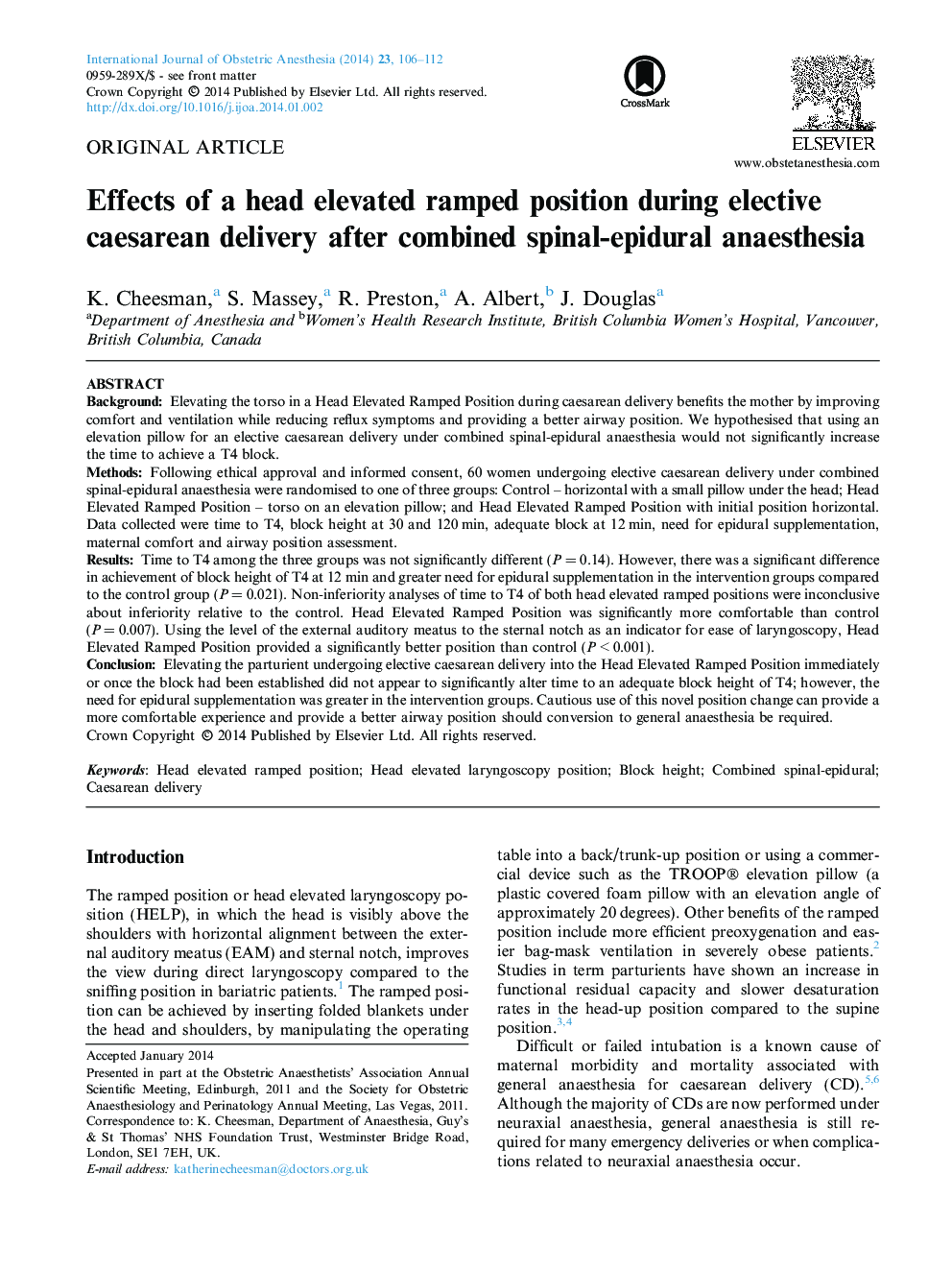| Article ID | Journal | Published Year | Pages | File Type |
|---|---|---|---|---|
| 2757493 | International Journal of Obstetric Anesthesia | 2014 | 7 Pages |
BackgroundElevating the torso in a Head Elevated Ramped Position during caesarean delivery benefits the mother by improving comfort and ventilation while reducing reflux symptoms and providing a better airway position. We hypothesised that using an elevation pillow for an elective caesarean delivery under combined spinal-epidural anaesthesia would not significantly increase the time to achieve a T4 block.MethodsFollowing ethical approval and informed consent, 60 women undergoing elective caesarean delivery under combined spinal-epidural anaesthesia were randomised to one of three groups: Control – horizontal with a small pillow under the head; Head Elevated Ramped Position – torso on an elevation pillow; and Head Elevated Ramped Position with initial position horizontal. Data collected were time to T4, block height at 30 and 120 min, adequate block at 12 min, need for epidural supplementation, maternal comfort and airway position assessment.ResultsTime to T4 among the three groups was not significantly different (P = 0.14). However, there was a significant difference in achievement of block height of T4 at 12 min and greater need for epidural supplementation in the intervention groups compared to the control group (P = 0.021). Non-inferiority analyses of time to T4 of both head elevated ramped positions were inconclusive about inferiority relative to the control. Head Elevated Ramped Position was significantly more comfortable than control (P = 0.007). Using the level of the external auditory meatus to the sternal notch as an indicator for ease of laryngoscopy, Head Elevated Ramped Position provided a significantly better position than control (P < 0.001).ConclusionElevating the parturient undergoing elective caesarean delivery into the Head Elevated Ramped Position immediately or once the block had been established did not appear to significantly alter time to an adequate block height of T4; however, the need for epidural supplementation was greater in the intervention groups. Cautious use of this novel position change can provide a more comfortable experience and provide a better airway position should conversion to general anaesthesia be required.
